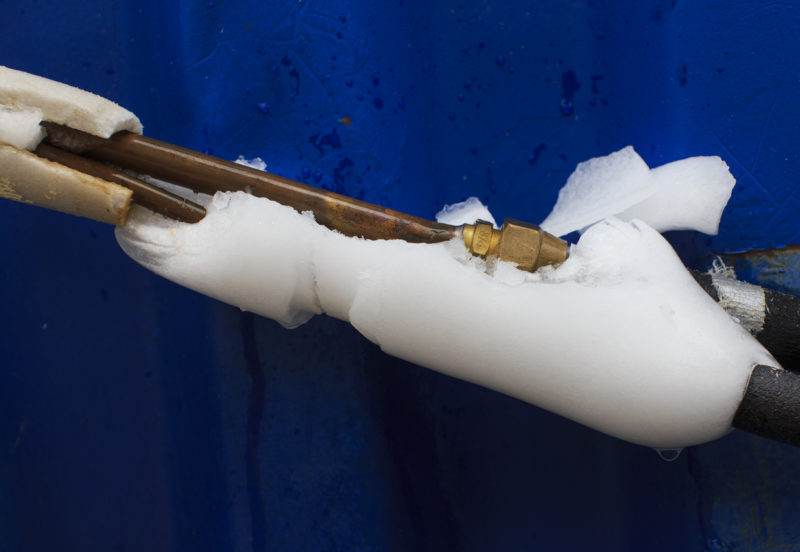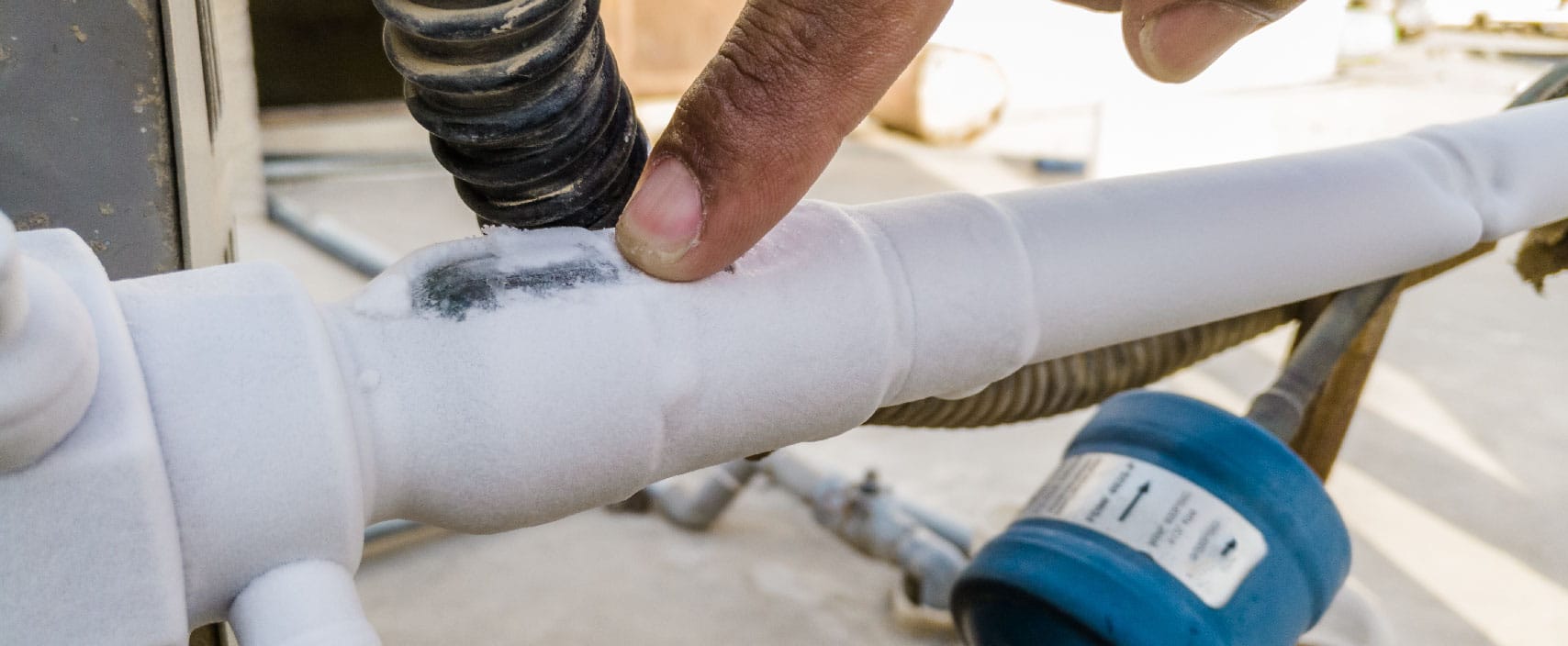What to Do When Your AC Pipe Gets Frozen: Essential Guidance
What to Do When Your AC Pipe Gets Frozen: Essential Guidance
Blog Article
How do you really feel when it comes to Have a Frozen AC Line? Here’s How to Fix It?

Introduction
Discovering that your a/c pipeline is frozen can be concerning, especially during warm summertime when you count on your ac system one of the most. Comprehending what to do in such a scenario is important to avoid more damages to your air conditioning system and guarantee your comfort indoors.
Recognizing the Causes
Numerous elements can contribute to the freezing of an air conditioning pipeline. Comprehending these reasons can help you attend to the problem successfully.
Absence of Airflow
One common root cause of a frozen AC pipeline is inadequate air movement. When the airflow over the evaporator coil is restricted, it can trigger the coil to go down below freezing temperature level, bring about ice formation on the pipe.
Low Refrigerant Levels
Not enough refrigerant degrees in your a/c system can likewise result in a frozen pipeline. Reduced cooling agent degrees can create the pressure in the system to go down, bring about the cold of dampness on the evaporator coil.
Winter Conditions
In colder climates, freezing temperature levels outside can add to the freezing of AC pipelines. If your AC device is not appropriately shielded or if there are leaks in the ductwork, cold air can infiltrate the system, causing the pipeline to ice up.
Dirty Air Filters
Unclean or clogged air filters can restrict air movement in your AC system, resulting in different concerns, consisting of a frozen pipeline. It's essential to replace or clean your air filterings system frequently to guarantee correct air movement and prevent ice buildup.
Indications of a Frozen Air Conditioner Pipe
Identifying the indicators of a frozen AC pipeline is crucial for prompt action.
Reduced Airflow
If you observe a considerable decline in air movement from your vents, it could indicate an icy pipeline.
Ice Buildup on the Pipe
Visible ice buildup on the cooling agent line or the evaporator coil is a clear indication of a frozen AC pipeline.
Strange Sounds from the Unit
Uncommon noises, such as hissing or bubbling, originating from your air conditioning unit can signify that there's ice present on the pipeline.
Immediate Actions to Take
When confronted with an icy a/c pipe, it's essential to act quickly to prevent further damage to your cooling system.
Shutting off the a/c
The first step is to switch off your ac system to avoid the system from running and intensifying the concern.
Looking for Blockages
Evaluate the location around the interior device for any kind of blockages that might be blocking air flow, such as furniture or drapes.
Defrosting the Pipe
You can make use of mild methods like placing towels soaked in warm water around the icy pipeline to aid thaw it slowly.
Preventive Measures
Taking safety nets can assist prevent future occurrences of an icy air conditioner pipeline.
Normal Maintenance Checks
Arrange regular upkeep talk to a professional HVAC technician to make certain that your air conditioning system is running efficiently.
Altering Air Filters
Routinely change or cleanse your air filters to avoid air flow restrictions and keep ideal efficiency.
Shielding Exposed Pipes
If your air conditioning pipelines are subjected to cold temperature levels, take into consideration protecting them to stop cold throughout winter months.
Looking For Professional Help
If DIY methods fail to fix the problem or if you're unclear regarding just how to proceed, it's finest to seek aid from a certified HVAC service technician.
When DIY Methods Fail
If your attempts to thaw the pipeline or address other issues are not successful, it's time to call an expert.
Significance of Hiring a Professional HVAC Technician
A certified HVAC professional has the knowledge and tools needed to diagnose and repair issues with your air conditioning system securely and effectively.
Verdict
Taking care of an icy air conditioner pipeline can be an irritating experience, yet recognizing just how to react can assist lessen damage and bring back convenience to your home. By understanding the reasons, recognizing the signs, and taking timely action, you can effectively attend to the problem and protect against future incidents.
What to Do If Your AC Line Is Frozen
Make Sure All Supply and Return Air Vents Are Open
If you notice problems with airflow, the first thing you should do is check your supply and return vents. Supply vents distribute clean, conditioned air throughout your home. As this air becomes stale, it’s pulled into the return vent, where it’s reconditioned before being sent back out through the supply vent.
When these vents are closed, air won’t flow in the home. Before examining your AC, check the vents in every room and ensure they’re all open.
Check for a Dirty Air Filter
Another possible cause of limited airflow is a dirty air filter. Your air conditioner’s filters catch elements you don’t want to breathe in, such as dirt and dust. Over time, filters can become clogged, ultimately blocking air from flowing in and out. The lack of airflow can then cause the entire coil to freeze and will completely restrict any air from moving through it. The AC may need to be powered off for one to two days to allow the coil to thaw after replacing the filter to allow proper functioning of the unit. This debris can also accumulate on your AC’s evaporator coil, requiring a more serious repair. In general, air filters should be cleaned regularly (about every two weeks).
Assess Your Outdoor Unit
In addition to checking your AC, assessing the outdoor unit is a good idea. Also known as the condensing unit, it works with your interior unit to release heat outside. An issue with the outdoor unit can result in rising internal temperatures.
Overgrown Shrubs or Clogged Leaves
From leaves and twigs to shrubs and debris, there’s no shortage of outdoor elements that can accumulate around your condensing unit. When these elements get lodged inside the unit, they can block airflow. Fortunately, removing the blockage can solve the problem.
Sounds of a Broken Fan
Shrubs and leaves aren’t the only things that can impede your outdoor unit’s airflow. If the fan is broken, the unit won’t be able to properly get rid of heat — which means the internal temperature won’t go down. First, make sure the fan is spinning. If it is, check for the following sounds of a broken fan:
Buzzing Rattling Screeching Hissing Clicking Preventative Measures
Nobody wants to deal with a frozen AC line. In addition to causing problems with your air conditioner, they require professional repairs. On the bright side, there are preventative measures you can take to help ensure this issue doesn’t arise in the first place.
https://www.coopergreenteam.com/blog/what-to-do-if-ac-line-frozen

Do you like reading about What Do I Do If My AC Pipe Is Frozen? Leave feedback further down. We will be pleased to find out your opinion about this entry. We hope that you come back again soon. Sharing is good. Helping others is fun. Thank you for your time. Come back soon.
Click Here Report this page